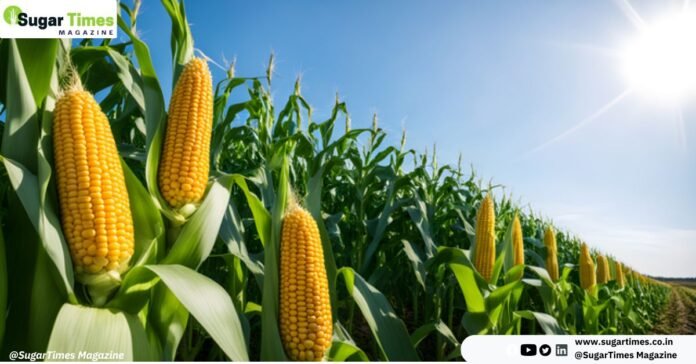India’s drive to blend ethanol with petrol is picking up speed, marking a big step toward cleaner and more sustainable energy. Thanks to joint efforts by the government and industry players, the country has significantly ramped up ethanol production, especially from grain-based sources.
At a recent event hosted by the Grain Ethanol Manufacturers Association (GEMA), Food Secretary Sanjeev Chopra praised the progress made so far, especially the early achievement of the 20% ethanol blending target. He credited this success to the combined efforts of everyone involved in the ethanol ecosystem.
Chopra highlighted that the government is actively working to ensure a steady supply of raw materials for ethanol production. He noted that India has now surpassed a production capacity of 1,800 crore liters of ethanol.
Importantly, he pointed out that maize is now a top priority for the government as a feedstock for ethanol. With increased maize cultivation and better payment systems for farmers, this crop is becoming central to India’s ethanol plans. He also applauded GEMA’s role in boosting ethanol output from food grains.
GEMA President Dr. C. K. Jain thanked the Department of Food and Public Distribution (DFPD) for its continued support and expressed optimism that this collaboration would continue to drive growth in the sector.
India’s Ethanol Blended Petrol (EBP) Programme is positioning the country as a global leader in clean fuel alternatives. It aligns with national goals to cut carbon emissions and promote sustainability.
Ethanol Blending Highlights
-
In June 2025, ethanol blending in petrol reached 19.9%, nearly hitting the 20% goal.
-
From November 2024 to June 2025, the average blend rate stood at 18.9%.
-
Oil companies received 87.5 crore liters of ethanol in June alone, bringing the total ethanol used between November and June to 661.1 crore liters.
-
The government aims to hit the 20% ethanol blending target by the end of the 2025-26 Ethanol Supply Year.
Ethanol use has seen a dramatic rise — from 38 crore liters in 2013-14 to over 707 crore liters in 2023-24, helping India achieve an average 14.6% blend last year.





